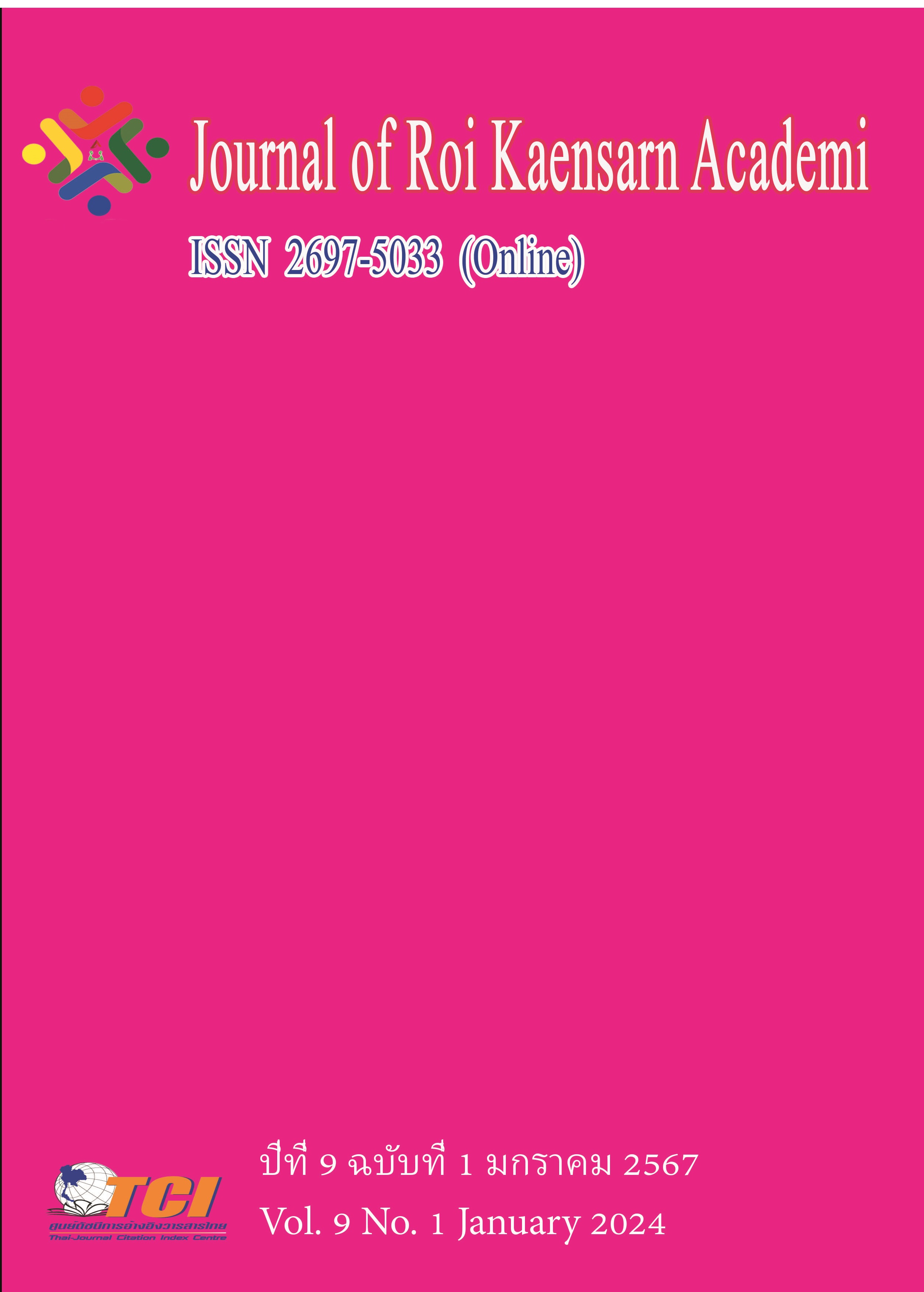Research on Elementary School Students' Participatory Animated Pedagogical Agent Design in the Educational Metaverse Context
Main Article Content
บทคัดย่อ
With the rapid development of virtual learning environments, animated pedagogical agents have emerged as a key component of the learning experience. Animated pedagogical agents not only guide students through the learning process using verbal and non-verbal cues but also activate social responses by presenting engaging social cues, thereby triggering deep cognitive processing during learning. Digital characters and virtual personas are gradually becoming the focus of the education field, providing learners with an interactive learning environment. With the continuous advancement of AR technology, digital characters and virtual personas have become valuable educational resources. Through realistic agent characters, learners achieve a high level of integration with the learning environment, creating a rich, face-to-face learning interaction. Supported by cutting-edge technology, this study utilized Metahuman and Unreal Engine 5 to successfully develop four pedagogical agents, each with unique teaching roles, appearances, and personality types. Throughout the research process, emphasis was placed on the active involvement of elementary school students. Through collaborative design with researchers, students actively participated in constructing the appearance of the pedagogical agent roles. This collaborative design not only aligns with the demands of the educational metaverse but also significantly enhances students' cognitive awareness of the pedagogical agent roles, meeting learners' expectations. In terms of design, cooperative inquiry techniques were employed as an effective method for co-designing among elementary school students. This not only increased the involvement of upper-grade elementary students in the agent design process but also provided a practical set of guidelines for future design projects. Therefore, this study not only offers valuable insights for the development of educational technology but also provides practical methods and tools for promoting student participation in the design process.
Article Details
เอกสารอ้างอิง
Baylor, A. L., & Kim, Y. (2005). Simulating instructional roles through pedagogical agents. International Journal of Artificial Intelligence in Education. 15 (2), 95-115.
Baylor, A. L., & Ryu, J. (2003). The effects of image and animation in enhancing pedagogical agent persona. Journal of Educational Computing Research. 28 (4), 373-394.
Baylor,&Amy L. (2011),The design of motivational agents and avatars,Etr&D-Educational Technology Research and Development. 59 (2),291-300.
Fang, H. (2020). The Effect of Augmented Reality Book Reading for School-Age Children: A Perspective on Animated Teaching Agent Images. Library Forum. 6, 126-133.
Flemban, F. Y. (2018). Animated Pedagogical Agent’s Roles and English Learners’ Prior Knowledge: The Influence on Cognitive Load, Motivation, and Vocabulary Acquisition.USF Tampa Graduate Theses and Dissertations.
Hwang, G. J., & Chien, S. Y. (2022). Definition, roles, and potential research issues of the metaverse in education: An artificial intelligence perspective. Computers and Education: Artificial Intelligence, 3, 100082.
Johnson, A. M., Didonato, M. D., & Reisslein, M. (2013). Animated agents in K-12 engineering outreach: Preferred agent characteristics across age levels. Computers in Human Behavior. 29 (4), 1807-1815.
Johnson, W. L., Rickel, J. W., & Lester, J. C. (2000). Animated pedagogical agents: Face-to-face interaction in interactive learning environments. International Journal of Artificial intelligence in education. 11 (1), 47-78.
Liew, T. W., & Tan, S. M. (2021). Social cues and implications for designing expert and competent artificial agents: A systematic review. Telematics and Informatics. 65, 101721.
Liew, T. W., Tan, S. M., & Jayothisa, C. (2013). The effects of peer-like and expert-like pedagogical agents on learners' agent perceptions, task-related attitudes, and learning achievement. Journal of Educational Technology & Society. 16 (4), 275-286.
Moreno, R., Mayer, R. E., Spires, H. A., & Lester, J. C. (2001). The case for social agency in computer-based teaching: Do students learn more deeply when they interact with animated pedagogical agents?. Cognition and instruction. 19 (2), 177-213.
Parmar, D., Olafsson, S., Utami, D., & Bickmore, T. (2018). Looking the part: The effect of attire and setting on perceptions of a virtual health counselor. In Proceedings of the 18th international conference on intelligent virtual agents. (301-306).
Riley, S. K. L., & Stacy, K. (2008). Teaching in virtual worlds: Opportunities and challenges. Setting Knowledge Free: The Journal of Issues in Informing Science and Information Technology. 5 (5), 127-135.
Warner, D. S. (2022). The metaverse with chinese characteristics: A discussion of the metaverse through the lens of confucianism and daoism (Order No. 29335749). Available from ProQuest Dissertations & Theses Global. (2723855721). Online. Retrieved from https://www.proquest.com/dissertations-theses/metaverse-with-chinese-characteristics-discussion/docview/2723855721/se-2
Wu, B., Yu, X., & Gu, X. (2020). Effectiveness of immersive virtual reality using head‐mounted displays on learning performance: A meta‐analysis. British Journal of Educational Technology. 51 (6), 1991-2005.
Yılmaz, R., & Kılıç-Çakmak, E. (2012). Educational interface agents as social models to influence learner achievement, attitude and retention of learning. Computers & Education. 59 (2), 828-838.

